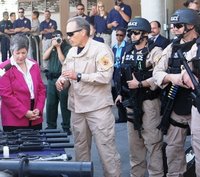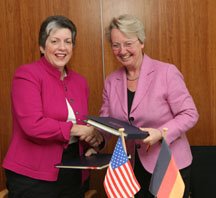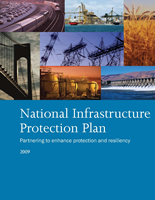Southwest Border

In California, I met with state and local leaders in San Diego, toured the border and visited the Otay Mesa port of entry – one of the busiest commercial ports on the Southwest border.
More than $400 million in Recovery Act funds is being directed to the Southwest border. This money will be used to upgrade infrastructure at the ports of entry, add technology and inspection equipment, and strengthen our surveillance and communications capabilities.
In Mexico, I visited with my foreign counterparts, and along with Attorney General Holder, attended an important conference on arms trafficking. The smuggling of guns is a serious problem and contributes to a lot of the violence we’re seeing in Mexico among the drug cartels and organized criminal networks.
To combat the problem, we are moving substantial resources to border, including more than 360 additional DHS officers and agents, license plate readers that will allow us to scan for suspect vehicles, southbound rail screening, and additional grant funding for state and local law enforcement. These measures will help us counter the flow of guns and cash into Mexico while protecting cities and communities along the border.
Finally, on my return, I stopped in Laredo, Texas to meet with community leaders, speak with members of the Laredo Border Enforcement Security Task Force (BEST), which is a multi-agency law enforcement team that fights criminal organizations and smugglers, and visit the Laredo port of entry. In recent weeks, we’ve made several significant seizures of cash and guns in Laredo, including more than $3 million discovered in a hidden compartment in the floor of a bus bound for Mexico.
Examples like this impede the ability of criminal organizations to fund their activities. Since the start of this fiscal year, CBP and ICE together have seized more than $55 million in cash, over 630 weapons, and nearly 125,000 rounds of ammunition.
We’re going to continue to keep the pressure on. I consider this a historic opportunity to help Mexico confront a serious threat that impacts the safety and security of both of our countries. We all have a stake in this fight, and here at the Department we’re going to continue to do our part to make sure we succeed.
Janet Napolitano
Labels: ARRA, border violence, CBP, ICE, international, Mexico, partnerships, Recovery Act, state and local partnerships








